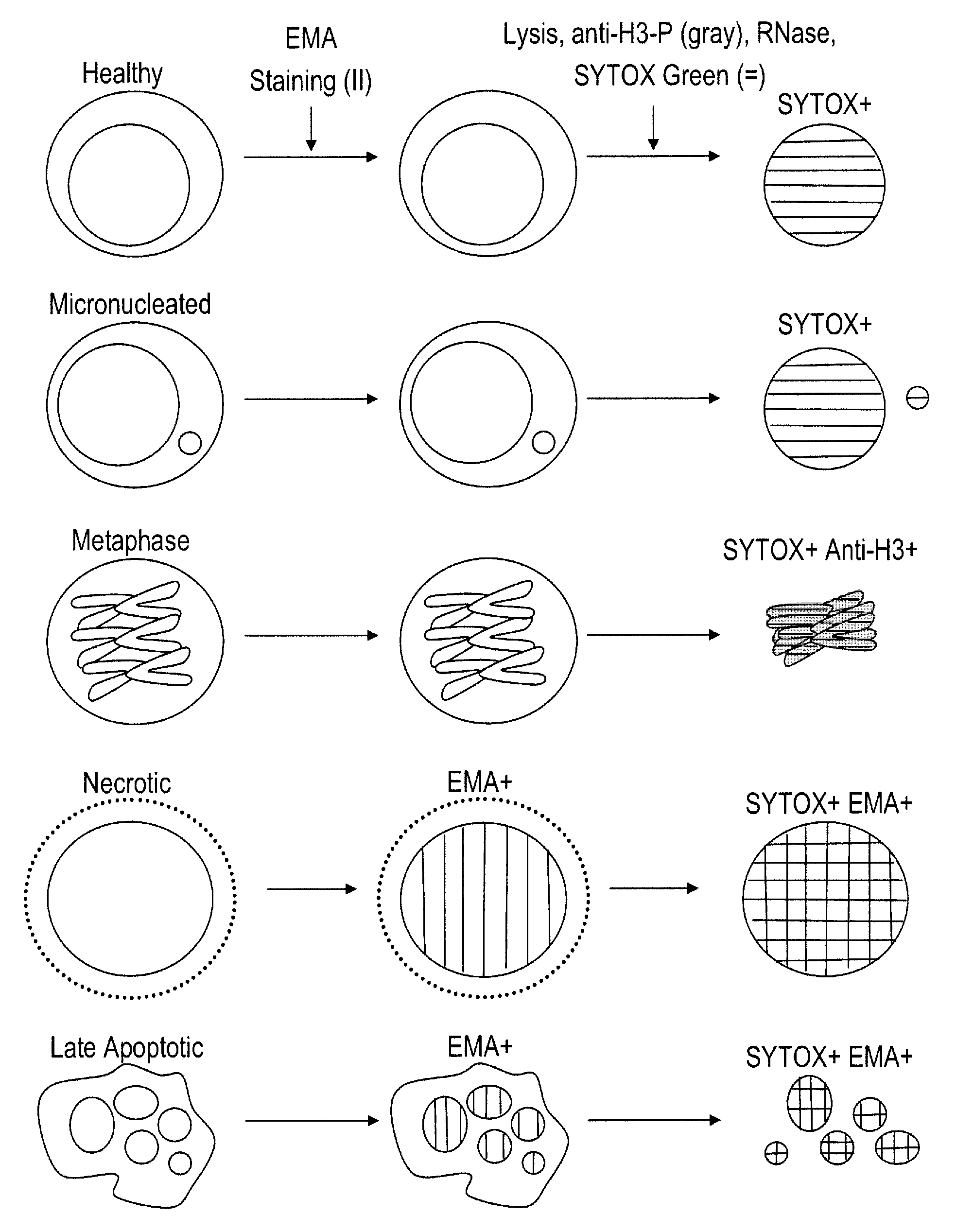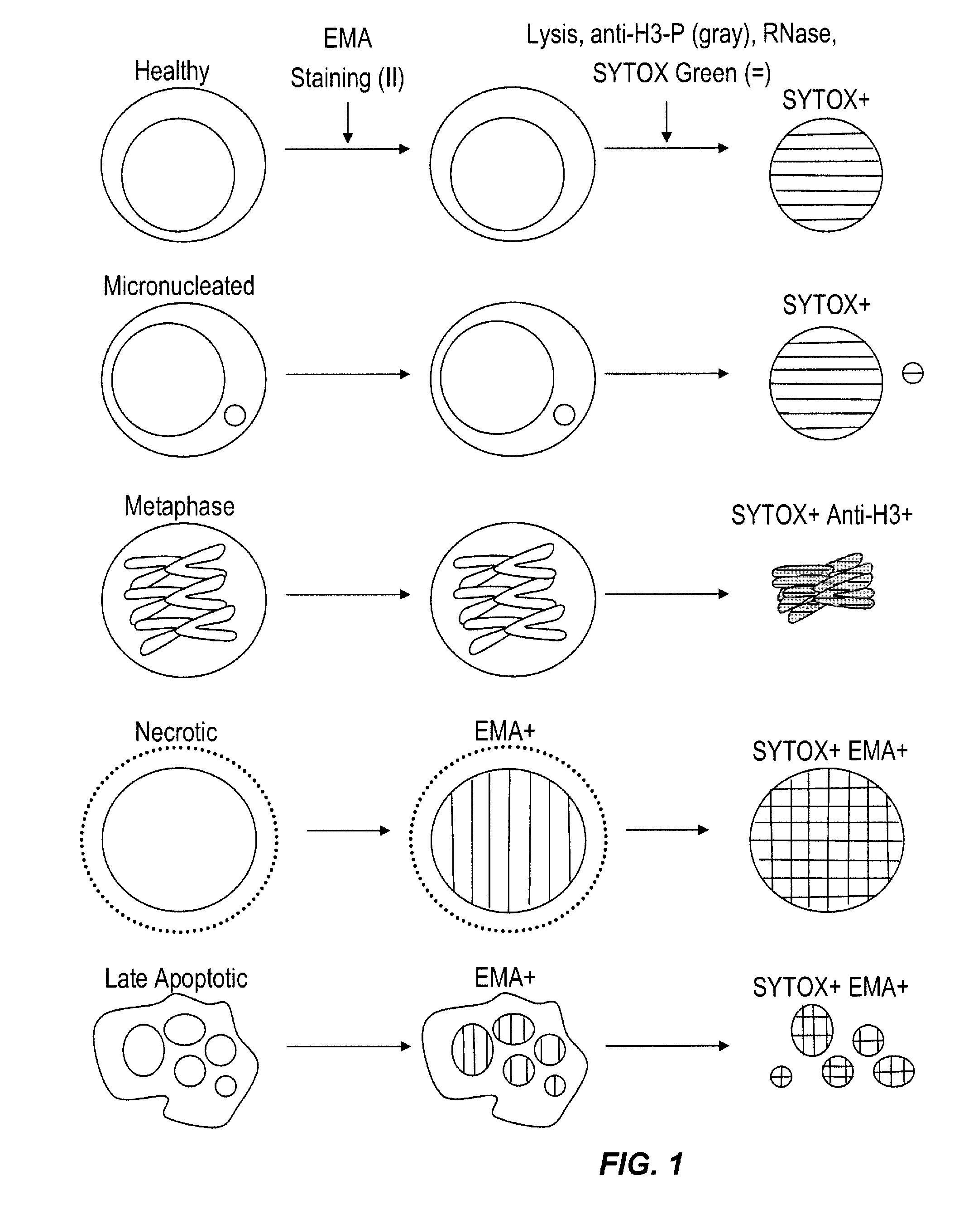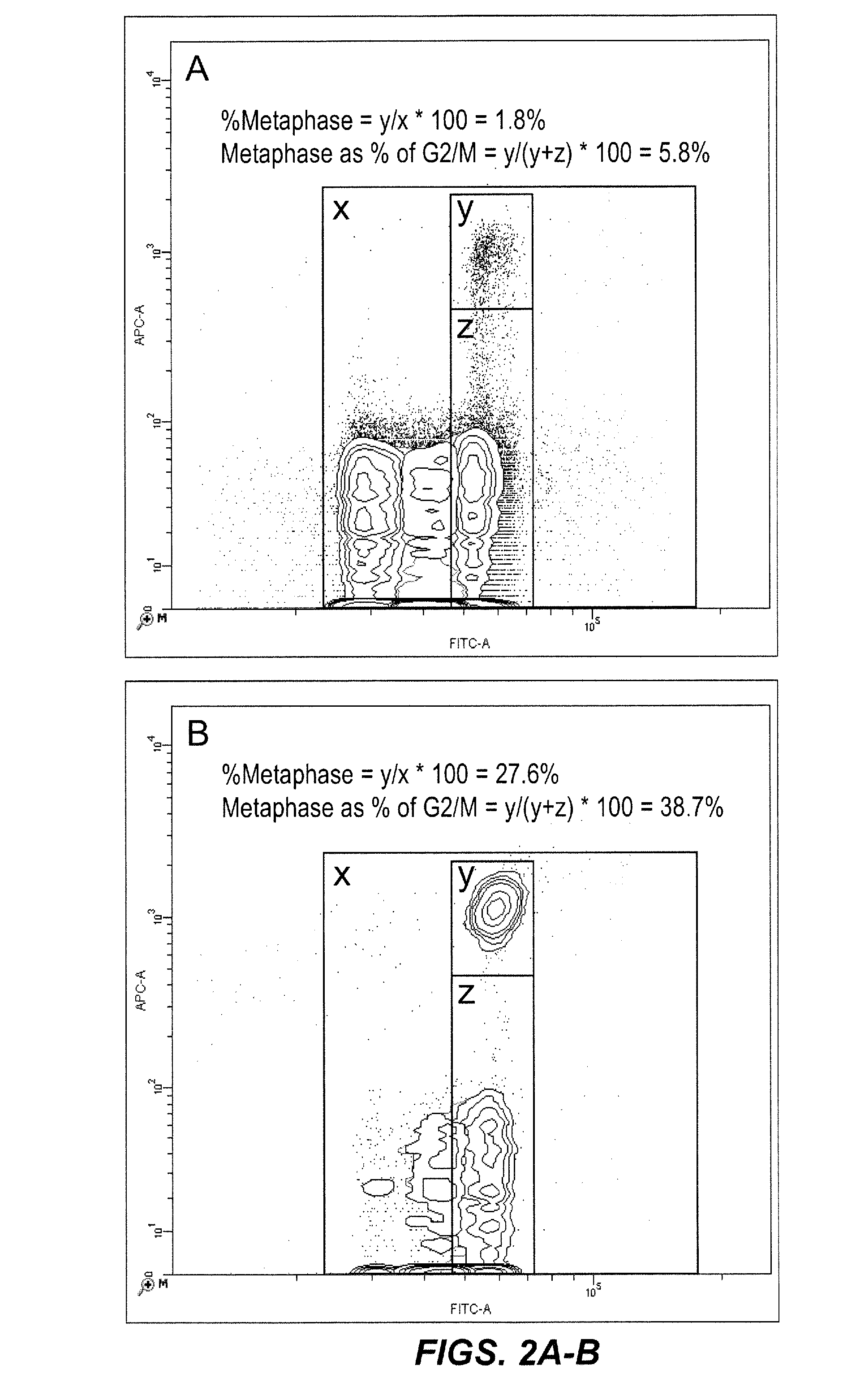Method for enumerating eukaryotic cell micronuclei with an emphasis on simultaneously acquiring cytotoxicity and mode of action information
a technology of eukaryotic cell micronuclei and cytotoxicity, which is applied in the field of enumerating eukaryotic cell micronuclei with an emphasis on simultaneously acquiring cytotoxicity and mode of action information, can solve the problems of insufficient evaluation of toxicity of natural and industrially manufactured compounds and formulations, laborious traditional toxicity evaluations, and large use costs, and achieves cost savings, fast, reliable and accurate results
- Summary
- Abstract
- Description
- Claims
- Application Information
AI Technical Summary
Benefits of technology
Problems solved by technology
Method used
Image
Examples
example 1
Treatment with Demecolcine
[0084]In this experiment, TK6 cells were treated with 0 or 0.05 ng / ml demecolcine, a metaphase blocking agent. As described above, the cells were then contacted with a first lysis solution that brought them simultaneously in contact with detergent, SYTOX® Green as a pan-DNA fluorescent dye, anti-H3-P (Alexa 647 conjugate) as a metaphase specific fluorochrome, and with RNase. After an appropriate incubation period, the liberated nuclei, MN, metaphase chromosomes, and chromatin debris were contacted with a second lysis solution, and then analyzed on a dual-laser flow cytometer. FIG. 2 shows the resulting bivariate plots of anti-H3-P versus SYTOX® Green fluorescence. Whereas the SYTOX® Green parameter alone is able to differentiate G1, S, and G2 / M cells based on their increasing nucleic acid dye associated fluorescence, it is not capable of differentiating metaphase events from G2 / M, as both exhibit 4n DNA content. However, the anti-H3-P associated fluorescenc...
example 2
Treatment with Reference Genotoxicants
[0085]In these experiment, TK6 cells were exposed to a range of genotoxic chemical concentrations in triplicate wells, with a goal of achieving approximately 50% reduction in relative survival at the termination of the experiment (24 to 27 hours after initiation of treatment). The cell cultures contained equal numbers of counting beads which facilitated the relative survival measurements. As described above, at the termination of the treatment period, cells were contacted with a first fluorescent reagent (EMA) in order to label the chromatin associated with dead and / or dying cells. After photoactivaton and washing steps, the cells were brought into simultaneous contact with detergent to liberate nuclei, MN, metaphase chromosomes, and chromatin debris, a second fluorescent reagent (anti-H3-P Alexa 647 conjugate as a metaphase specific fluorochrome), a third fluorescent reagent (SYTOX® Green as a pan-DNA fluorescent dye), and RNase. The liberated ...
example 3
Polyploidy
[0086]In this experiment, TK6 cells were treated with solvent, the clastogen cisplatin, or the aneugen paclitaxel. Treatments occurred in 96 well plates, demonstrating the ability to scale the invention to smaller vessels and thereby reduce the amount of test article required for testing. As described above, at the termination of the treatment period, cells were contacted with a first fluorescent reagent (EMA) in order to label the chromatin associated with dead and / or dying cells. After photoactivaton and washing steps, the cells were brought into simultaneous contact with detergent to liberate nuclei, MN, metaphase chromosomes, and chromatin debris, a second fluorescent reagent (anti-H3-P Alexa 647 conjugate as a metaphase specific fluorochrome), a third fluorescent reagent (SYTOX® Green as a pan-DNA fluorescent dye), and RNase. The liberated nuclei, MN, metaphase chromosomes, and chromatin debris were subsequently contacted with a second lysis solution and were then ana...
PUM
| Property | Measurement | Unit |
|---|---|---|
| exposure time | aaaaa | aaaaa |
| concentration | aaaaa | aaaaa |
| depth | aaaaa | aaaaa |
Abstract
Description
Claims
Application Information
 Login to View More
Login to View More - R&D
- Intellectual Property
- Life Sciences
- Materials
- Tech Scout
- Unparalleled Data Quality
- Higher Quality Content
- 60% Fewer Hallucinations
Browse by: Latest US Patents, China's latest patents, Technical Efficacy Thesaurus, Application Domain, Technology Topic, Popular Technical Reports.
© 2025 PatSnap. All rights reserved.Legal|Privacy policy|Modern Slavery Act Transparency Statement|Sitemap|About US| Contact US: help@patsnap.com



